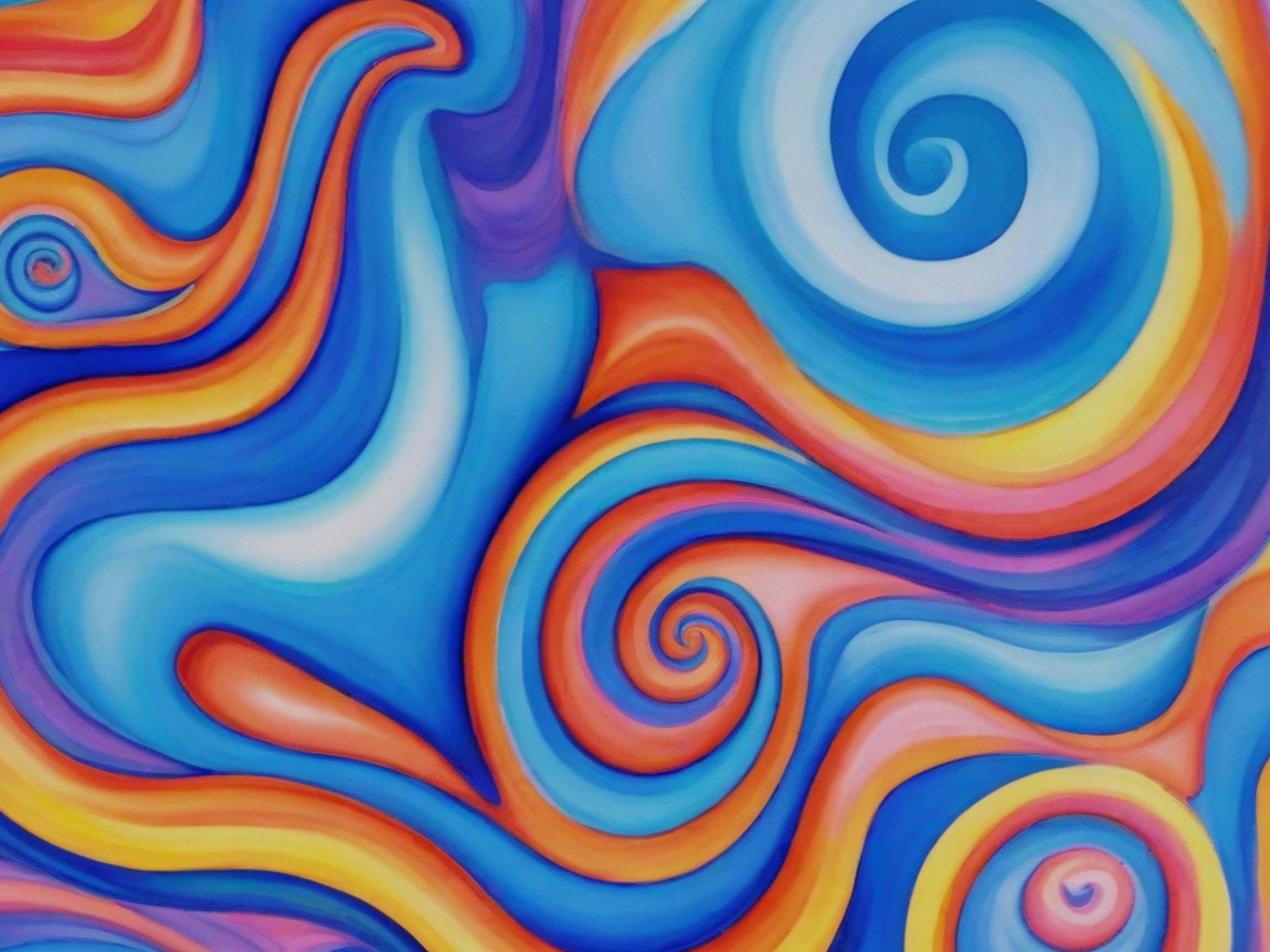About this Product
This artwork is a vibrant, abstract composition that swirls with energy and movement. It features a dynamic interplay of flowing lines and spiral shapes, painted in bold and harmonious hues of blue, orange, yellow, and pink. The curving forms create a sense of rhythm and motion, reminiscent of swirling winds, ocean waves, or cosmic nebulae.
The transitions between colors are smooth and fluid, giving the piece a dreamlike and hypnotic quality. The blue tones dominate, evoking a sense of calm and serenity, while the warm oranges and yellows add energy and vitality, creating a balanced contrast.
The spirals scattered across the composition draw the viewer's eye, symbolizing infinity, growth, or the cyclical nature of life. The overall effect is both calming and invigorating, inviting viewers to immerse themselves in the flowing patterns and interpret their meaning through their own imagination. This piece is a celebration of color, movement, and abstraction, radiating a joyful and uplifting energy.
Baribault studios
Meet the Maker
Jill Baribault is a celebrated artist and designer whose work transcends conventional boundaries, blending imagination with craftsmanship. As the creative force behind Baribault Studios, Jill has become known for her ability to transform ideas into stunning visual narratives. Her passion for art was ignited at an early age, drawing inspiration from the natural world, vibrant cultural motifs, and the timeless elegance of human emotion.
With a background in [insert relevant artistic or educational background, if known], Jill honed her skills across a variety of media, including [list key specialties, e.g., painting, sculpture, interior design, digital art, etc.]. Her works are marked by their meticulous attention to detail, innovative techniques, and an unerring commitment to storytelling through design.
Jill’s artistry has been showcased in [insert exhibitions, notable projects, collaborations, or features], earning her acclaim for her unique perspective and masterful execution. Beyond her studio, she is a passionate advocate for [mention philanthropic work, mentoring, or community involvement, if applicable], believing that art has the power to inspire, connect, and transform lives.
Today, Jill continues to push the boundaries of creativity, crafting pieces that resonate with depth, beauty, and originality, leaving a lasting imprint on the art and design landscape.
_jpg_363552128372_1732372938.jpeg?t=1732372938)
How it’s Made
Sketching the Composition
The process likely started with a rough sketch, either digitally or traditionally, to establish the swirling lines and spiral motifs. The artist focused on creating a dynamic composition that flows across the canvas, emphasizing movement and rhythm.
2. Base Color Application
The artist applied a gradient or solid blocks of color as the foundation. Using a palette of blues, oranges, yellows, and pinks, they laid out the primary shapes and forms to guide the final design.
3. Blending and Gradient Work
Digital tools (such as Photoshop, Procreate, or Illustrator) were likely used to blend colors smoothly. Brushes with soft edges and gradient tools helped create seamless transitions between the hues, giving the artwork its fluid and dreamlike quality.
4. Detailing the Swirls and Spirals
Using a fine digital brush or a steady hand with traditional paint, the spirals and flowing lines were refined. These elements were carefully positioned to draw the viewer's attention and add a sense of movement and depth.
5. Layering and Depth Creation
Multiple layers were used to build the depth and richness of the colors. Transparency and opacity adjustments helped create the illusion of overlapping forms and depth within the swirls.
6. Polishing the Details
Highlights and shading were added to emphasize the curvature and three-dimensional appearance of the swirling forms. This step added a dynamic energy to the piece, making the colors pop and giving the artwork a vibrant, glowing look.
7. Final Adjustments
The artist likely made final tweaks, such as enhancing the saturation, contrast, and brightness, to ensure the colors appeared vivid and the composition felt cohesive. Any unnecessary elements were removed to maintain simplicity and balance.
This combination of careful planning, skillful blending, and bold use of color creates a striking and visually captivating piece that celebrates movement and energy. If made traditionally, it might have involved acrylic or oil paints and blending techniques with brushes. If digital, tools like layer effects and blending brushes would have played a key role.




_jpg_655612301460_1733017129.jpeg?t=1733910316)

